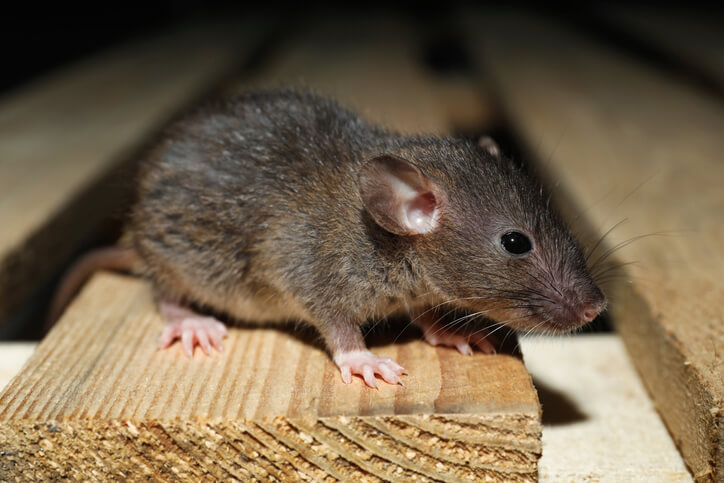Smart Trap Maintenance Logs: Ensuring Pest Control Safety
Share
In today's highly digital world, maintaining optimal pest control requires more than just setting up traps. Effective management involves ongoing tracking and monitoring through smart trap maintenance logs. These logs are not only essential for enhancing pest control efficiency but also ensuring safety and compliance with health regulations.
Incorporating smart technology into pest control strategies has revolutionized how facilities manage unwanted pests. With the integration of smart traps, it's crucial to keep proper maintenance logs for effective pest management.

Why Are Smart Trap Maintenance Logs Important?
Utilizing smart trap maintenance logs enhances the efficiency and accuracy of pest control protocols. These logs provide detailed data on trap activity, facilitating informed decision-making. By maintaining comprehensive logs, facilities can ensure timely interventions and minimize pest infestations.
Smart logs offer real-time feedback on trap performance. This continuous data gathering allows for more swift identification of pest activity and helps optimize trap placement for maximum effectiveness.
Components of Effective Smart Trap Maintenance Logs
An efficient maintenance log must include several key components for the best results:
- Location of Traps: Documenting the exact locations of installed traps.
- Activity Recording: Logs should record each instance of activity, specifying the time and nature of the pest caught.
- Maintenance Tasks: Any maintenance performed on the traps should be thoroughly documented along with dates and technicians involved.
- Environmental Conditions: Logging any environmental factors that might influence pest activity.
Setting Up and Monitoring Smart Trap Maintenance Logs
Setting up and efficiently maintaining smart trap maintenance logs requires a systematic approach. Start by strategizing trap placements in high-risk areas identified through prior inspections or historical data.
Once traps are in place, consistent monitoring is crucial. The data gathered will funnel into the maintenance logs, which can then be analyzed to adjust strategies and ensure trap efficiency. Facilities must invest in staff training to ensure data is recorded accurately and regularly.
Keeping Logs Efficient and Comprehensive
Ensuring smart trap maintenance logs are both efficient and comprehensive involves staying current with technology and routinely auditing logs for accuracy. This proactive approach could involve using advanced software solutions that automatically update logs based on trap activity.
Additionally, facilities may consider hiring specialists in smart pest control systems to frequently review and enhance the traps and logs system. Connecting with industry experts can further optimize pest control practices. For a deeper dive into pest control technologies in the food industry, you can explore the article here.
Smart Traps in Various Facilities
Different facilities use smart traps in varying ways. For instance, warehouses require uniquely tailored pest control strategies due to their size and variety of stored goods. In such environments, smart trap usage data from trajx.io indicates how technology can be customized to cater to specific warehouse needs.
Additionally, logistics centers have unique challenges when it comes to pest control. Learn more about how pest control is practiced in these settings at eversor.be.
Computer-Aided Pest Control Audit
Incorporating smart technology in logs leads to a more streamlined pest monitoring and control process. Using AI-powered pest audits ensures delivery of enhanced precision in data logs, helping to highlight intervention needs and manage pest ecosystems effectively.
Challenges and Solutions
Although smart traps and maintenance logs offer tremendous potential, challenges do exist. These may include initial setup costs, technology integration, and consistent data management.
However, choosing the right service provider and investing in technology can drive more effective operations, reduce labor costs, and improve the accuracy of pest control.
Maximizing Efficiency
To maximize efficiency, facilities must gain a comprehensive understanding of their pest control needs and customize their smart trap maintenance logs accordingly.
For example, focusing on high-activity seasons and ensuring a robust response plan can significantly curb pest occurrences and safeguard operations.

FAQ
What are smart trap maintenance logs?
Smart trap maintenance logs are systems used to document and track pest activity and trap performance. They help offer insights from real-time feedback provided by the participating systems, aiding in timely pest control measures.
Why are these logs crucial?
These logs are pivotal in ensuring effective pest control by maintaining accurate records of trap performance, environmental factors, and pest activity. Logs help in optimizing trap placement and enhancing overall efficiency.
How do I ensure accuracy in these logs?
Accuracy in logs can be enhanced through regular audits, staff training, and employing advanced software solutions for automated data logging and analysis.
This article contains affiliate links. We may earn a commission at no extra cost to you.
